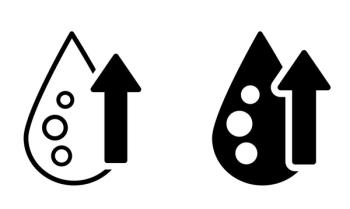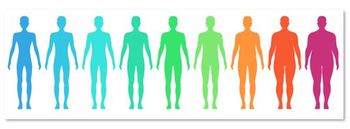
Age and Gender Guide New Cholesterol Thresholds for Teens
KINGSTON, Ontario -- There's a more sophisticated way to calculate just what high lipid levels in teens portend for their cardiovascular futures.
KINGSTON, Ontario, Aug. 28 -- There's a more sophisticated way to calculate just what high lipid levels in teens portend for their cardiovascular futures.
A system of cholesterol thresholds for teens that takes into account age and gender provides a more accurate prediction of future cardiovascular disease risk than current estimates, Ian Janssen, Ph.D., and Courtney J. Jolliffe, M.Sc., of Queen's University here reported online in Circulation, Journal of the American Heart Association.
The National Cholesterol Education Program's current system for diagnosing elevated lipoproteins arbitrarily defines borderline-high levels in children ages all the way from two to 19 years old, boy or girl, at or above the 75th percentile of the population distribution. High is above the 95th percentile.
Previous studies have shown that the NCEP categories are not good at predicting which children are likely to have high-risk cholesterol levels as adults.
"Lipoprotein concentrations change considerably with normal growth and maturation and vary by gender, which is not reflected in these cut points," wrote the authors, "Adolescents should not be misdiagnosed simply because they are on a different part of the growth curve."
The new classifications identify borderline-high total cholesterol levels in 14% of adolescent males at every age. Under the NCEP classification system, however, the rate of borderline-high cholesterol varies widely by age. For example, 50% of 10-year-olds but only 25% of 13-year-olds fit this category using the NCEP thresholds.
The investigators analyzed blood lipoprotein measurements taken of 6,067 adolescents ages 12 to 20 as part of the National Health and Nutritional Examination Surveys (NHANES) conducted from 1988 through 2002. The NHANES studies did not collect fasting blood samples from participants younger than 12 years old, so they were not included in the analysis.
By tracking lipid profiles for each age and gender in growth curves, the researchers found that:
- Total cholesterol concentrations dipped down during early adolescence and then rose to reach adult concentrations for males and females,
- Low density lipoprotein-cholesterol (LDL-C) levels followed the same pattern as total cholesterol for males but rose steadily from age 12 for females,
- High density lipoprotein-cholesterol (HDL-C) declined slightly until age 16 for boys and then stayed relatively constant while levels did not change with age for girls, and
- Triglycerides increased linearly in males over time whereas levels declined in girls' early teen years then rose to adult concentrations.
These age-specific curves for the four commonly used lipoproteins were correlated to adult threshold values for cardiovascular disease risk to make percentile cutoffs for adolescents.
Total Cholesterol was defined as:
- Borderline-high at or above the 86th and 78th percentiles for males and females, and
- High based on the 97th and 94th percentiles for males and females, respectively.
LDL cholesterol was defined as:
- Above normal for the 54th and 53rd percentiles for males and females, respectively,
- Borderline-high as the 86th and 83rd percentiles for males and females, respectively, and
- High at the 98th percentile for both genders.
HDL cholesterol levels thresholds were set at:
- Low as the 26th percentile for males and 27th percentile for females, and
- Protective as the 87th and 73rd percentiles for males and females, respectively.
Triglyceride curve cutoffs were:
- Borderline-high for the 88th and 89th percentiles for males and females, respectively, and
- High for the 95th percentile for both males and females.
"It is only intuitive that lipoprotein risk curves be developed," Drs. Janssen and Jolliffe wrote, "given that pediatricians have used height, weight, body mass index, and blood pressure growth curves for years."
Although cardiovascular disease does not typically affect teens, "the progression of cardiovascular disease begins in early childhood via the development of atherosclerosis, with the rate of progression being proportionate to plasma lipoprotein concentrations," the authors noted.
This link provides further evidence that it is important to identify increased cardiovascular risk early, the authors added, during a time when lifestyle changes may be easier to make.
Many clinicians screen young people only when they are at high risk of dyslipidemia and cardiovascular disease due to its presence in a parent or grandparent.
The NCEP suggests initially measuring the nonfasting total cholesterol and doing a further analysis only if this level is elevated. The investigators recommended maintaining this strategy but using the cutpoint charts or lipoprotein percentile curves they developed to interpret the results.
The authors cautioned that validation studies are needed for the new category cutpoints. They acknowledged that their risk assessment assumes that a teen's lipoprotein percentile will remain relatively constant as they age, which some but not all longitudinal studies have confirmed.
Since the NHANES studies only collected fasting blood samples from participants who were at least 12 years old, lipoprotein risk curves could not be made for younger children although the National Cholesterol Education Program classification system includes children as young as two years old.
Newsletter
Enhance your clinical practice with the Patient Care newsletter, offering the latest evidence-based guidelines, diagnostic insights, and treatment strategies for primary care physicians.




